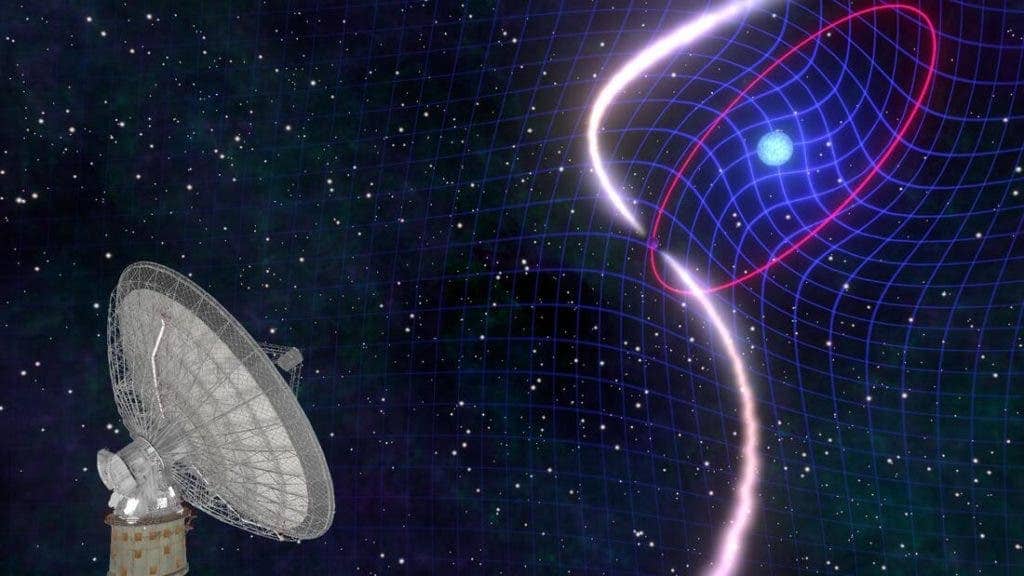
Einstein’s brilliant general theory of relativity is the foundation of modern gravitational theory, explaining in minute detail the precise motion of stars, planets, satellites, and even the flow of time. Now, a new prediction of the general theory of relativity, known as “frame-dragging”, has been proven right after astronomers observed a spinning white dwarf dragging the very fabric of space-time around with it.
Don’t be a drag
One of the consequences of general relativity is that spinning bodies drag space-time in their vicinity around with them. The more massive an object and the faster its spin, the more powerful this dragging effect will be.
Actually observing frame-dragging has been challenging so far. The one produced by the Earth is too weak to be detected by our current instruments. For instance, to detect angular changes equivalent to just one degree, gyroscopes would need about 100,000 years of observation.
Fortunately, the universe has provided scientists with extensive, naturally-occurring gravitational laboratories. Among them, there’s the amazing PSR J1141-6545 binary system, which is composed of a white dwarf and a fast-spinning pulsar.
White dwarfs are what remains of stars like the sun after they have exhausted their nuclear fuel. The white dwarf in question is about the size of Earth but hundreds of thousands of times denser. It also rotates quite fast around its own axis, about every minute or two, compared to the 24 hours day on Earth. These characteristics suggest that the frame-dragging effect of the white dwarf should be about 100 million times more powerful than Earth’s.
Pulsars are also the remnants of massive stars. However, they’re made exclusively of neutrons packed incredibly tight together, rather than of conventional atoms. These stellar relics get their name because of the way their emissions appear to be “pulsating” out into space as they rotate very quickly, acting like a sort of lighthouse in the cosmos. The pulsar in the PSR J1141-6545 binary system packs about the mass of 400,000 Earths in a sphere the size of a city.
Previous research found that the white dwarf likely formed before the pulsar. As a result, before the pulsar was born in the aftermath of a supernova, the dying star that would go on to become the pulsar shed nearly 20,000 Earth masses worth of matter onto the white dwarf over the course of 16,000 years, thereby boosting its rate of spin.
Researchers at the Swinburne University of Technology and the Max Planck Institute positioned CSIRO’s Parkes radio telescope towards J1141-6545, finding that the pulsar rotates about 150 times a minute. They then mapped the path of the pulsar as it orbits the white dwarf by timing when its pulse arrives at the telescope. This method showed that the two stellar remnants orbit each other in less than 5 hours.
After analyzing numerous patient observations gathered over the course of a staggering 20 years, the researchers established that the pulsar’s orbit is tumbling through space. After ruling out all other options, this can only mean that the plane of its orbit is not fixed. Instead, it slowly rotates.
Writing in their study, the authors conclude that this tilting can only be the result of the white dwarf dragging space-time around it, pulling with it the pulsar’s orbital plane.
This is the latest in a string of confirmations that have validated Einstein’s theory of general relativity. Previously, scientists discovered gravitational waves and imaged a black hole’s shadow, both predicted by Einstein more than a century ago. But while these discoveries were made by modern, billion-dollar research facilities, frame-dragging has been confirmed by the 50-year-old Parkes telescopes. This illustrates how old tech is still sufficient to make world-class contributions to science.
The findings appeared in the journal Science.









